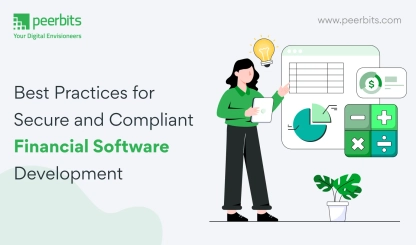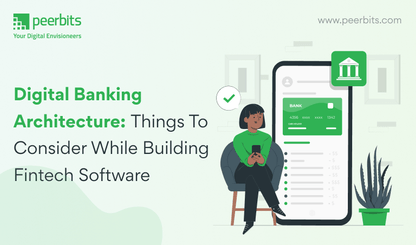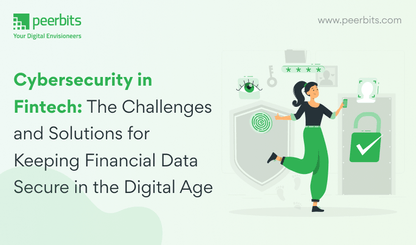The financial services are up for disruption, no doubt. Blockchain, the technology behind the bitcoin model, has too many advantages over traditional banking.
Faster transactions, lower fees, greater transparency, better accessibility… to ignore these changes is to rely on handheld pagers and not on smartphones for mobile communication today.
No less than the NASDAQ chief believes blockchain is reshaping the financial industry. Bob Greifeld said the global financial economy is ready for a shakedown.
Other big players like ING, DBS, Standard Chartered, and Visa had already expressed their interest in blockchain.
Expectedly, Fintech is aggressive about blockchain’s future. This sector has already made inroads in bitcoin transactions, payment gateways, and online forex trading for the last few years.
Now, it has its sight on financial services. And Fintech believes blockchain is the key to unlock the vault.
Fintech more ready to disrupt banks
Bitcoin has been around for eight years now, but it’s only in recent months that Fintech is really thawing the financial industry’s icy attitude towards disruption.
The change isn’t linear like a domino effect. It’s happening simultaneously on three sides that Fintech can leverage: new client generation, pressure on banks to earn more, and tech advances that bridge the two.
1. New and future clients are ready
The younger set of clients today are reared on peer-to-peer transactions. You’re talking about successful tech startups, their staff, investors, angel investors and their millions, if not billions, of customers, who are highly networked with service providers and with each other.
They are also accustomed to real time outcomes, online transactions, and crowdsourced wisdom, both professionally and on a personal level. Whether getting the hour’s restaurant deals, flagging down the nearest Uber car, or choosing the ideal software from a B2B directory, these clients are ready for Fintech’s model of middle man-free transactions.
2. New technology
This is mainly Fintech’s domain. The first two factors won’t count much without the main driver: tech. Advances in security, bandwidth, mobile application development & mobile platforms, and internet infrastructure including access are pushing into the mainstream what was once an alternative financial transaction model.

Today, Fintech is finally addressing security stumbling blocks, the main cyber issue for banks, to pave the way for industry-wide adoption. Even more, VC spending is increasing exponentially.
Blockchain has become an essential instrument and showed sky-rocketed growth in the last decade. According to Statista, the worldwide spending on blockchain in 2021 was $6.6 billion. The capital flow and resources being poured into blockchain tell us this tech is on full throttle.
What is being promised
No one knows yet how far blockchain—or its evolved version—will drive banking in the next five or ten years. But let’s focus on the top three advantages over traditional banking, why fintech is a bit cocky about the future.
1. Faster transactions
Traditional financial transactions are slow. They go through a series of third parties. For example, a typical payment is plowed into banks in different places, through a clearinghouse, a gateway, or stock exchange.
The money can go through as many as ten parties exchanging messages, security, or reconciliation, with the seller having to wait days to receive payment.

Blockchain promises to cut into that jungle and decentralize everything in banking. Already, bitcoin does in seconds what traditional stock trading does in three days to transact cash and securities.
Similarly, Fintech’s forex experience where sellers and buyers directly deal on real time using an online trading platform looks highly adaptive to bank transactions.
2. More accessible and transparent
Firewalls will give way to mobile encryptions allowing parties to access transactions anywhere, anytime they have internet. Blockchain makes transactions a shared ledger accessed by authorized parties.
Transactions are recorded and locked in blockchain. Parties can glean the entire historical data from the very first exchange. Indeed, there’s greater transparency here than in traditional banking where secrecy laws rule.
Arguably, security is still a thorn for Fintech. But more advanced mechanisms are in place and improving by the day. Transactions are validated unique by software, cutting away third-party verifiers.
Likewise, the blockchain tells the whole transactional story, so message exchanges between parties in traditional banking become obsolete.
3. Lower transaction fees
Blockchain speeds up transactions, which also results in lower fees. As third parties become unnecessary, so do their charges. Particularly, businesses that engage in multiple-country transactions will love it.
Traditional overseas transactions go through the respective countries’ central banks, then through the local banking system. A global company can pay as much as $25 per transaction.
As blockchain creates a network of ledger providers, businesses can directly deal with each other across borders. Bussmann predicts that transaction fees will fall to just a few cents.
Challenges for Fintech
Let’s be clear: blockchain has a long road ahead to become a mainstream financial model. The promises are there, but so do challenges. Here are the three most pressing issues Fintech needs to resolve:
Security
Cyber security is the top risk to banks KPMG 2016. In the last two years alone, KPMG reported that three major cyber attacks on systems linked to global SWIFT network cost the banking sector $100 million.
Blockchain only lets in authorized parties to access its public ledger. However, the idea of financial data sitting idly outside of a bank’s firewall is a banker’s nightmare.

o counter this, Fintech has to be more aggressive in building use cases and simplifying process knowledge to bring blockchain closer to traditional financial gatekeepers.
For instance, online transactions and hacking are often used in the same sentence, so blockchain is easily lumped with the issue.
But with blockchain, records are verified daily and by multiple parties called miners on top of the direct parties. With verification spread out and shared among myriad players all pointing to one financial ledger (the blockchain), the records are extremely difficult to hack or manipulate.
However, the same security measure has a drawback. With transactions irreversible, errors like extra zeros (called fat-finger trades, where someone with fat fingers hit an extra zero on the keypad) could be catastrophic.
Regulatory obstacles
Bank secrecy laws, central bank regulations, and other local banking rules can delay, even thwart, efforts to integrate blockchain to banking and financial services.
Blockchain adoption depends not only on governments’ willingness to allow it, but their willingness to resist powerful industry lobbyists against this tech disruption.
Industry resistance
Fintech also has to deal with resistance from banks and financial institutions, the province of the “old boys club.” Resistance can be legitimate fears like: a shared transactional system opens up spying between banks; or as mentioned earlier, cyber security.
There is, however, a more sinister resistance. And that is to NOT let Fintech control the game. Financial Times was the first to report this diversion from the original goal of bitcoin champions.
For many, bitcoin, and the blockchain model that drives it, is about empowering people. They can do their transactions free from intervention by big players, a.k.a., government and bankers. You can call it democratization of banking.
But already, “blockchain without bitcoin” is a growing idea in the financial sector. To some bankers, blockchain is about efficiency and cost reduction.
There are what-if talks among bankers, a scenario where only bankers, regulators, and trade insiders can access blockchain in the financial sector, according to Peter Randall, CEO of Setl, a UK blockchain and ledger system vendor.
Conclusion
How will the disruption take shape is the real question. It’s Fintech versus the financial industry, the young Turks versus the old guard.
For bankers, blockchain is a potential marketing platform that can push up their margins. For Fintech, it is no less than a technological disruption that will put the center of gravity to their side.
Our guess? If history repeats itself, Fintech has the future on its side. Technology marches to its own beat. Woe to the industry that blocks the march.




